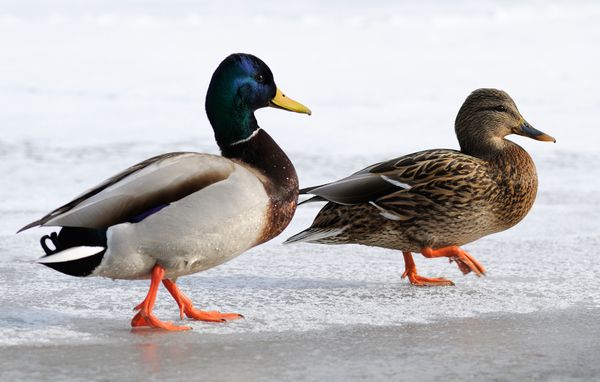Mallard Pet Duck: The Ultimate Guide to Raising and Caring for Your Feathered Friend
Guide or Summary:Mallard Pet DuckIntroduction to Mallard Pet DucksSelecting Your Mallard Pet DuckSetting Up the Perfect Home for Your Mallard Pet DuckNutrit……
Guide or Summary:
- Mallard Pet Duck
- Introduction to Mallard Pet Ducks
- Selecting Your Mallard Pet Duck
- Setting Up the Perfect Home for Your Mallard Pet Duck
- Nutrition and Feeding Your Mallard Pet Duck
- Health and Care for Your Mallard Pet Duck
- Training and Socialization for Your Mallard Pet Duck
Mallard Pet Duck
The allure of keeping a mallard pet duck has been captivating bird enthusiasts for years. As one of the most popular domesticated ducks, the mallard offers a unique blend of beauty, personality, and practicality. This comprehensive guide delves into every aspect of raising and caring for your feathered friend, ensuring a harmonious and enriching relationship from day one.
Introduction to Mallard Pet Ducks
Mallard ducks, scientifically known as Anas platyrhynchos, are renowned for their striking green heads, white neck rings, and vibrant blue bills. Native to North America, these ducks have been selectively bred for centuries to enhance their appearance and temperament. As pets, mallards are known for their sociable nature, making them excellent companions for individuals and families alike.

Selecting Your Mallard Pet Duck
When choosing a mallard pet duck, it's essential to consider factors such as age, health, and temperament. Younger ducks, typically between 6 and 8 weeks old, are more adaptable and easier to handle. Health-wise, look for ducks that appear active and alert, with clear eyes and feathers. Temperament plays a crucial role, with calm and docile ducks being ideal for beginners.
Setting Up the Perfect Home for Your Mallard Pet Duck
A comfortable and secure living environment is crucial for your mallard pet duck. A spacious outdoor aviary with access to water, shade, and a variety of plants is ideal. For indoor ducks, a well-ventilated enclosure with a heat source, such as a ceramic heater, is recommended. Bedding should be soft and absorbent, with materials like straw or wood shavings being suitable choices.
Nutrition and Feeding Your Mallard Pet Duck
Mallard ducks require a balanced diet to thrive. A diet consisting of commercial duck feed, fresh vegetables, and occasional treats like mealworms and fruits can provide essential nutrients. It's crucial to provide fresh water at all times, with daily cleaning and changing of the water being essential to maintain hygiene.

Health and Care for Your Mallard Pet Duck
Regular veterinary check-ups are crucial for maintaining your mallard pet duck's health. Vaccinations and parasite control measures should be discussed with your vet. Monitoring for signs of illness, such as lethargy, loss of appetite, and abnormal behavior, is vital. Prompt medical attention should be sought for any health concerns.
Training and Socialization for Your Mallard Pet Duck
Training and socialization are essential for developing a bond with your mallard pet duck. Positive reinforcement techniques, such as treats and verbal praise, can encourage desired behaviors. Socialization with other ducks and gentle handling can help acclimate your duck to new environments and people.
Raising a mallard pet duck can be a rewarding and enriching experience. By providing a comfortable living environment, a balanced diet, regular veterinary care, and proper training, you can ensure a happy and healthy life for your feathered friend. Embrace the unique qualities of the mallard and enjoy the companionship that comes with this remarkable bird.
